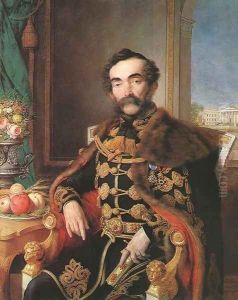Frigyes Lieder Paintings
Frigyes Lieder, a notable figure in the 19th-century Hungarian art scene, was born in 1810 in Pest, which is now part of Budapest, Hungary. His life and career were emblematic of the vibrant cultural milieu of his time, and he played a significant role in the development of Hungarian painting, especially in the realm of portraiture and historical themes. Lieder's journey into the arts began at an early age, under the tutelage of renowned artists in Hungary and abroad, which helped him cultivate a distinctive style that blended traditional Hungarian elements with the broader European art movements of the 19th century.
Lieder's artistic endeavors were profoundly influenced by the political and social upheavals of his time, including the Hungarian Revolution of 1848. His works often reflected the nationalistic fervor and the romanticism that characterized much of Hungarian art during this period. As a portraitist, Lieder was sought after by the Hungarian nobility and intellectual elite, capturing the likenesses of many prominent figures of his day with an eye for psychological depth and character.
Beyond portraits, Lieder's historical paintings and landscapes contributed to the shaping of a Hungarian national identity through art. His ability to infuse his works with a sense of historical grandeur and romanticized visions of Hungary's past made his contributions particularly significant in the period leading up to and following the Austro-Hungarian Compromise of 1867.
Lieder's influence extended beyond his own oeuvre through his role as an educator and mentor to the next generation of Hungarian artists. His commitment to the development of Hungarian art was evident in his involvement in art societies and exhibitions, which helped lay the groundwork for the flourishing of Hungarian art in the late 19th and early 20th centuries.
Frigyes Lieder passed away in 1871, but his legacy lived on, not only in his paintings but also in his contribution to the cultural and national identity of Hungary. His works remain a testament to a pivotal time in Hungarian history, capturing the spirit of a nation in transition and the individuals who shaped its course.
